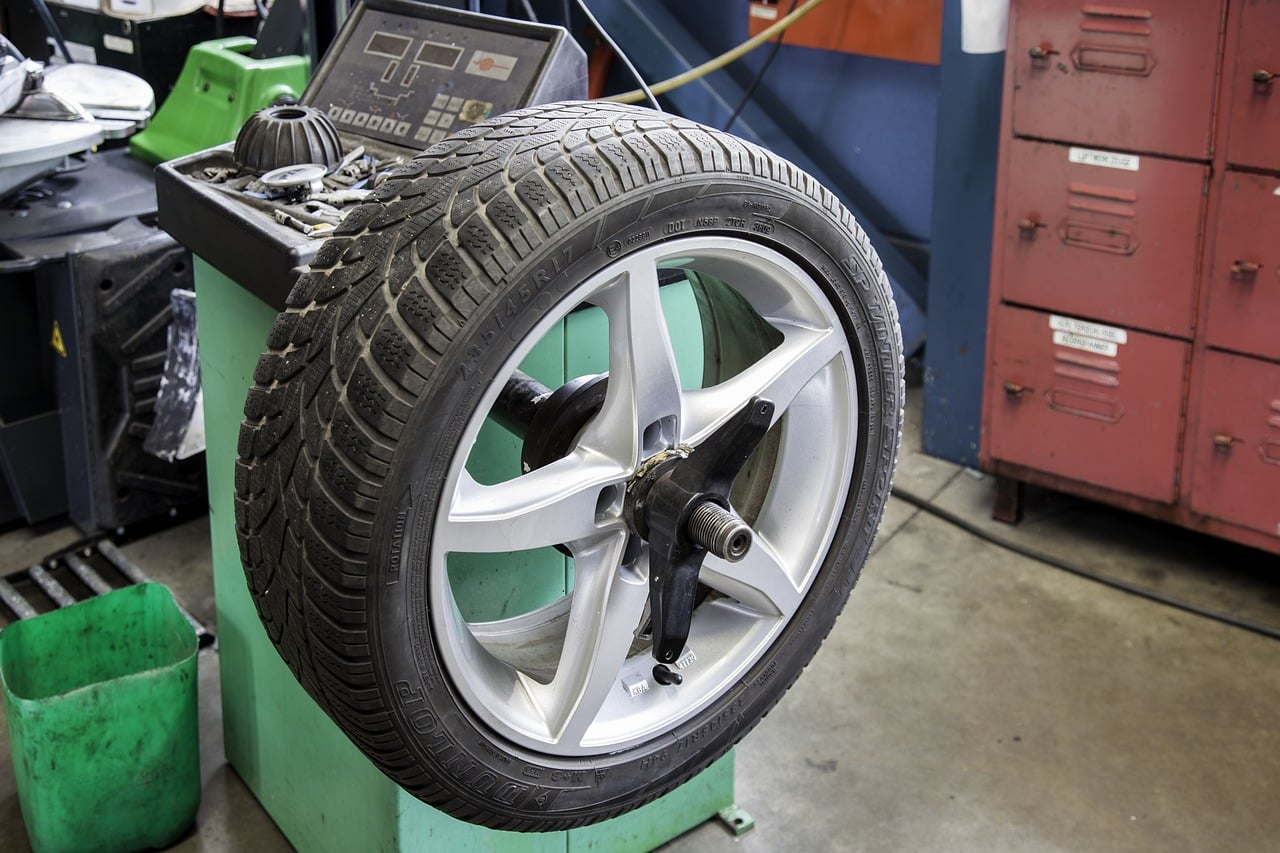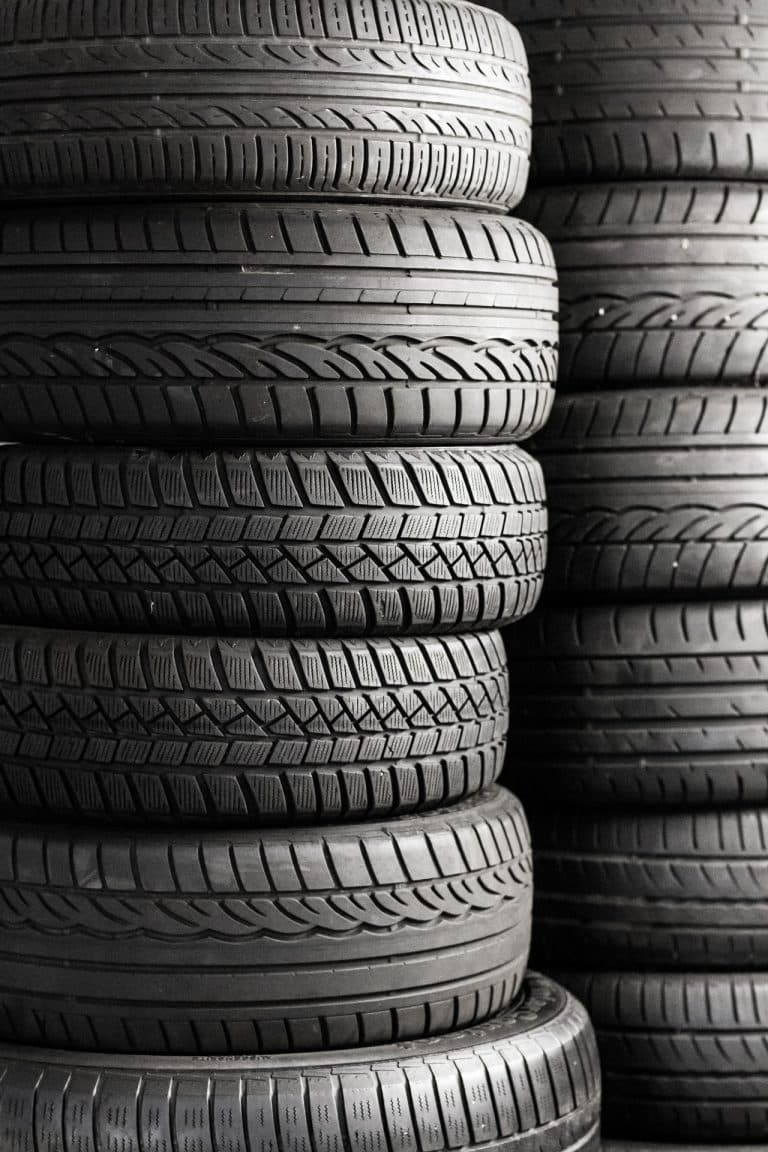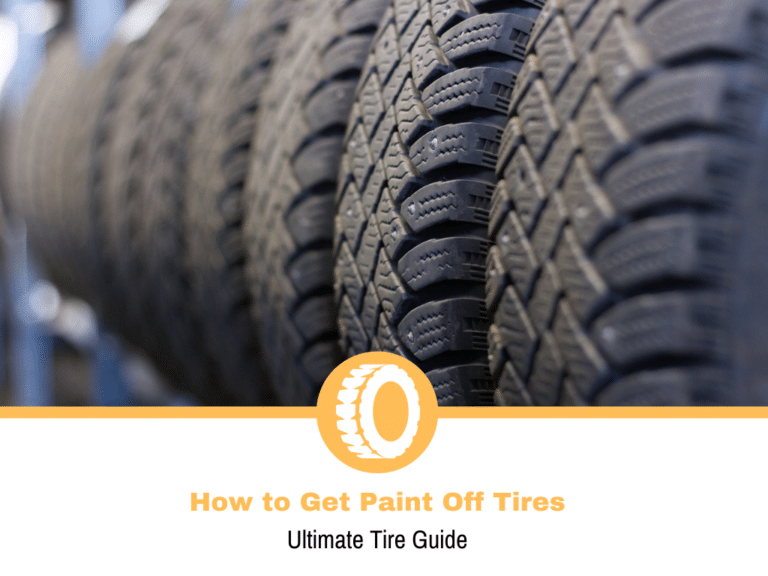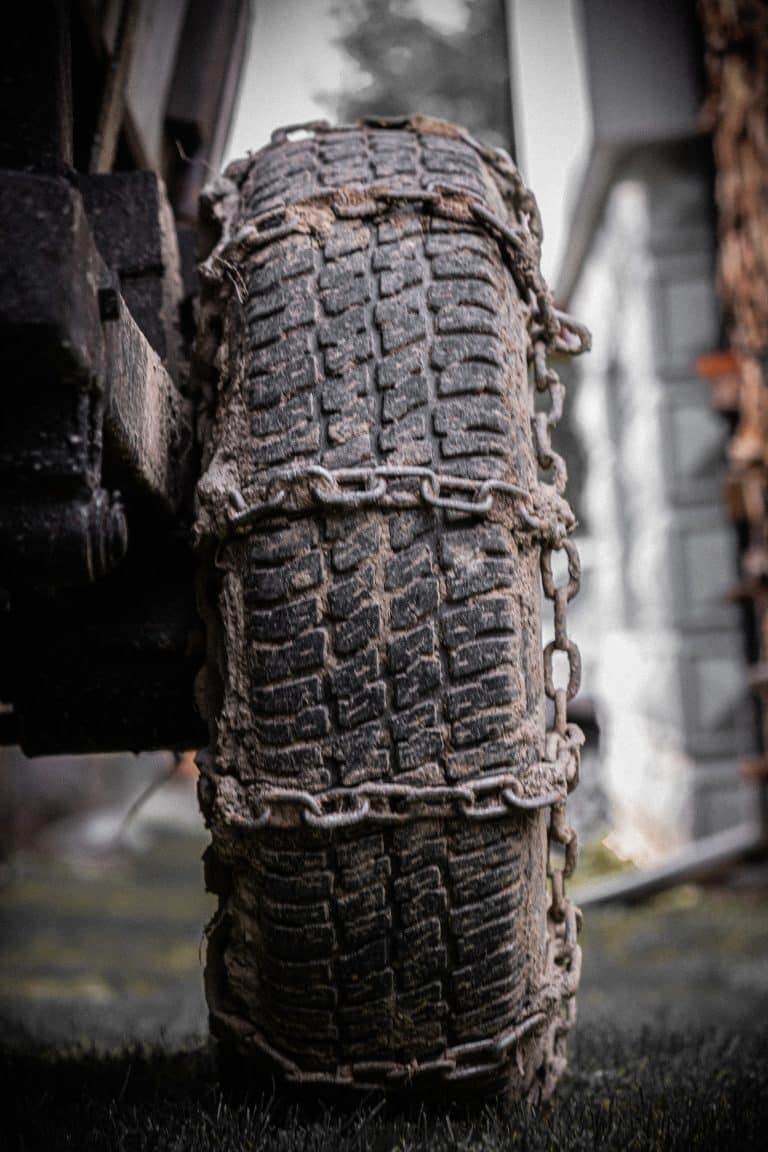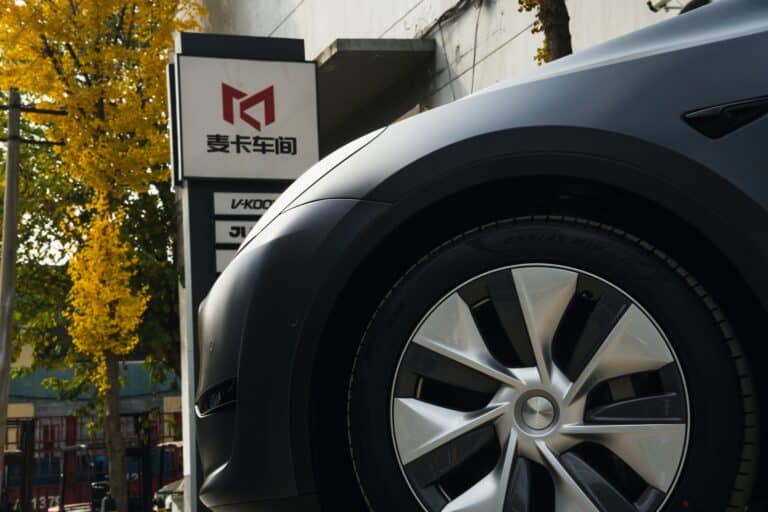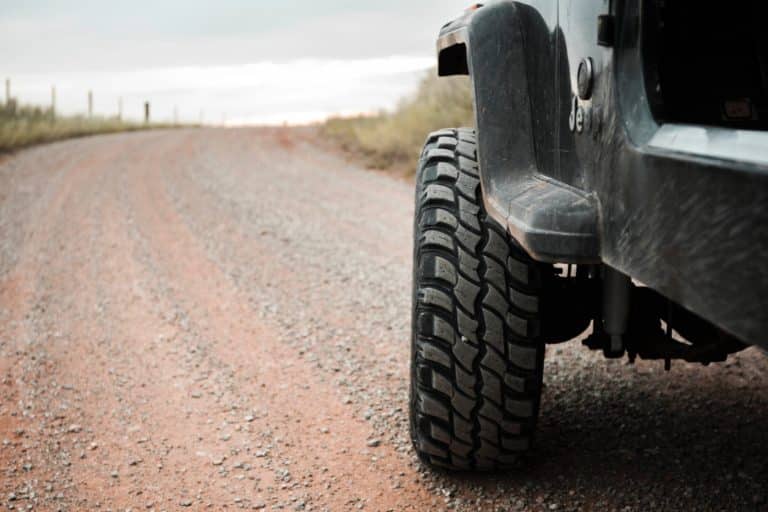Balancing Tires vs. Wheel Alignment
Regularly maintaining your car ensures it will last longer and perform as intended. There are plenty of parts that you need to keep in top shape, and the tires often get overlooked. Some people think getting a new set of tires is the only thing they need to do, and they’ll be fine for the next several years. Unfortunately, that isn’t the case.
Tires play an important role, as they transfer the power and inputs from you to the road. This enables the car to drive the way it does, but the interesting this is that the tires aren’t the only thing responsible for that. Sure, the rubber is the part that contacts the road, but it’s connected to a complicated system in the car that helps it perform.
The tires are wrapped around the wheel, which is connected to the car’s suspension system, braking steering, etc. and they work together to deliver performance. To ensure that you get the most out of the car and tires, these systems must work as close to perfection as possible, which is why some constant adjustments need to be made.
Among the most common aspects that most owners check and adjust are alignment and balance. I’ve seen some misconceptions and confusion about these two, so I made a guide on them.
In today’s article, I’ll explain what the difference between balance and alignment is and when should you check them.
Balancing Tires vs. Wheel Alignment
Adding small weights to the rim is a process of balancing tires. This ensures that the tire wears as evenly as possible and the ride quality is smooth.
Wheel alignment is the process of fine-tuning the suspension components so that the angle of the wheels is close to or identical to the manufacturer’s specifications. There are some ranges here, but overall, the idea is to have the tires facing the way that the car was designed for, something that differs from one model to another.
What is Tire Balancing?
Every part that comes fresh from the assembly line isn’t perfect, regardless of how much attention to detail manufacturers have put into it. The same goes for wheels and tires. Even though manufacturers make them straight, there are some minor flaws that need to be fixed.
Tires get balanced as soon as they get fitted to the rim, where you’re getting a new set or replacing your summer with winter ones or vice versa. There are some exceptions where you may need to do this mid-season, but I’ll get to that in a minute.
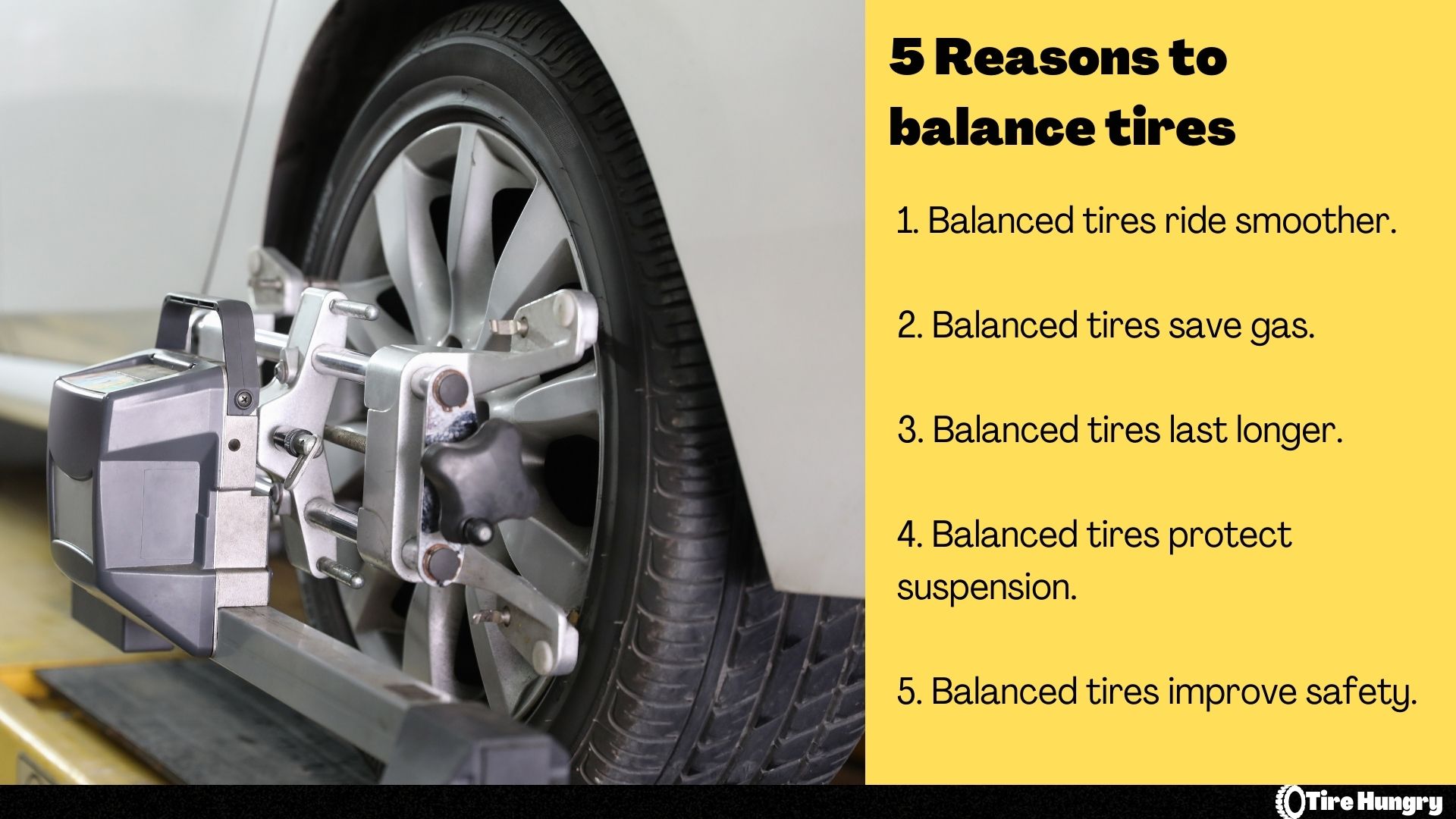
The process starts with the technician removing the wheel with the tire and fitting it to a machine. It spins at a certain speed and sensors combined with clever algorithms find where the weight is off. The technician then adds small weights to the inner or outer side of the rim to make sure that the tire is as balanced as possible.
On steel wheels, the weights are added to the flanges, while for alloy ones, they are on the underside. The weights start from less than an ounce and the technician will add as many as possible to get the “perfect balance”. The tire gets double-checked and if it’s all green, it goes back on the car and they do the same for all 4 wheels.
What is Wheel Alignment?
From the factory, manufacturers set up cars in a way that they’ll perform the best they can. In reality, the wheels are not perfectly aligned. As part of the suspension components which directly affect where the wheels are pointing are the camber, toe, and caster. Each one serves a different purpose, and even minor variations can change how your car drives and handles.
Similar to balancing, tire shops have machines that check if your wheels are per spec. There are several types of machines, but they all do the same thing – check the angles and tell the technician if some changes are needed.
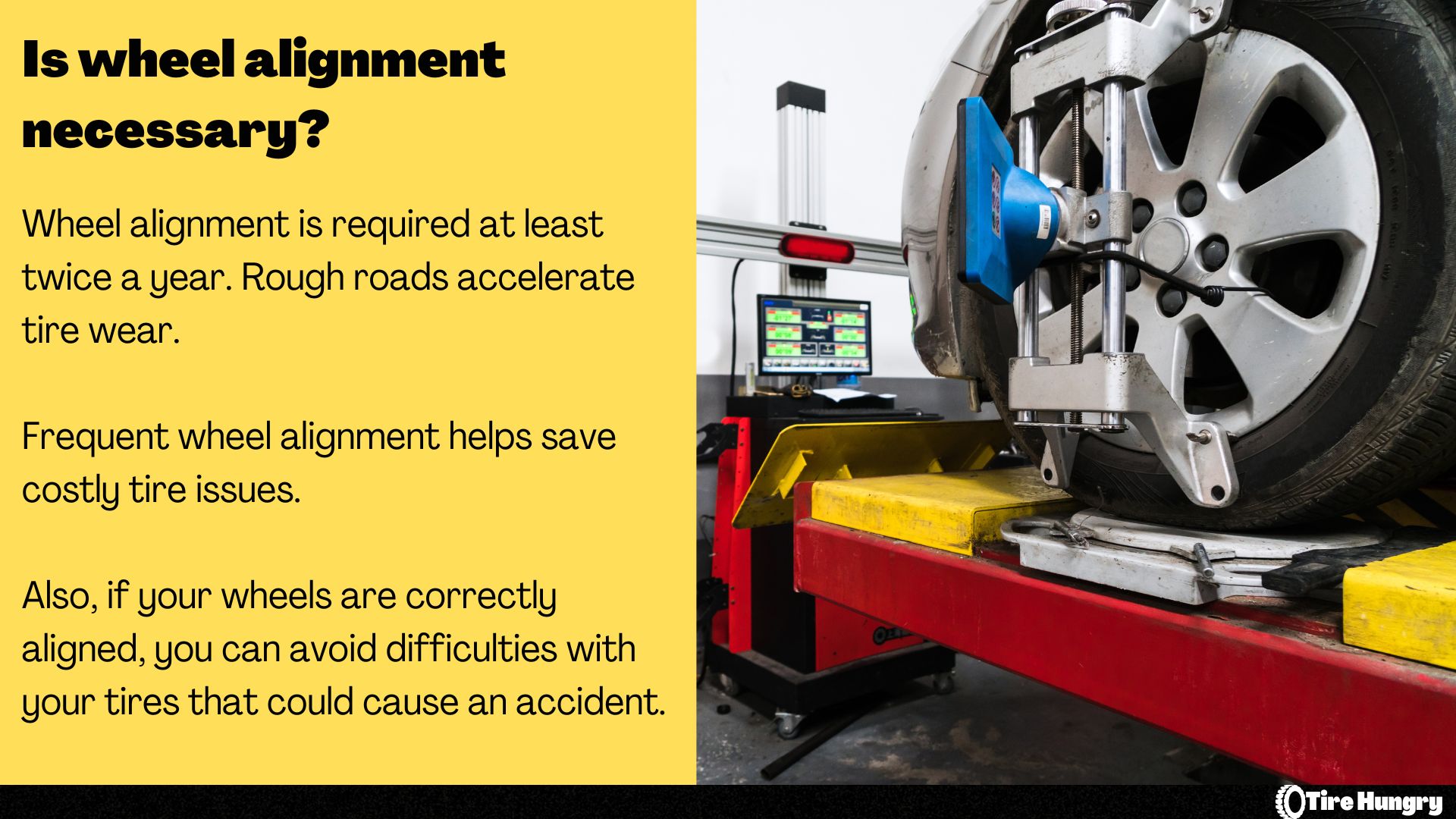
The car gets raised and special tools are fitted to each wheel, which then determines if the technician needs to make changes. They vary and the alignment gets divided into 3 types – front-end, thrust, and four-wheel. The suspension determines which type of alignment the technician will carry out.
The technician knows which wheel needs to be adjusted once the car is checked. If the suspension allows that, minor changes will be made so that the alignment falls within the parameters of what the car manufacturer specified.
How to Tell you Need to Balance your Tires?
Wheels mostly get balanced when a new set of tires is installed, and most people don’t bother with re-balancing them. In most cases, that’s fine, but there are some situations where you may need to take your tires to a shop to have them balanced.
As tires wear down, the balance that they had when new gets disturbed, so it could be a good sign you’ll need to go to the shop. Also, even though the weights are pretty good at remaining in place, sometimes they can fall, so it’s another case where the balance gets disrupted.
Instead of taking your car to check the balance of the wheels every week, there are a few things you’ll notice which should be a good indicator. The most common thing you’ll notice right away is vibrations. Depending on which wheel needs to be balanced, it can range from vibration in the steering wheel, the floorboard, or the seats. Some of the other signs of a tire out of balance are uneven or faster tire wear.
As soon as you notice some of these signs, it’s best to head over to your local tire shop and check if the tires are balanced correctly.
What causes tires to be out of balance?
Contrary to popular belief, tire balancing isn’t something you do only once. Even though tires get balanced when you go to a tire shop and have a new set fitted, you may find yourself in a situation where you’ll need to rebalance them again after a while.
One of the most common reasons is the one I mentioned – if the weight falls off. In some cases, they can fall off because they aren’t welded to the rim. This is not common but is the most common reason why tires get unbalanced.
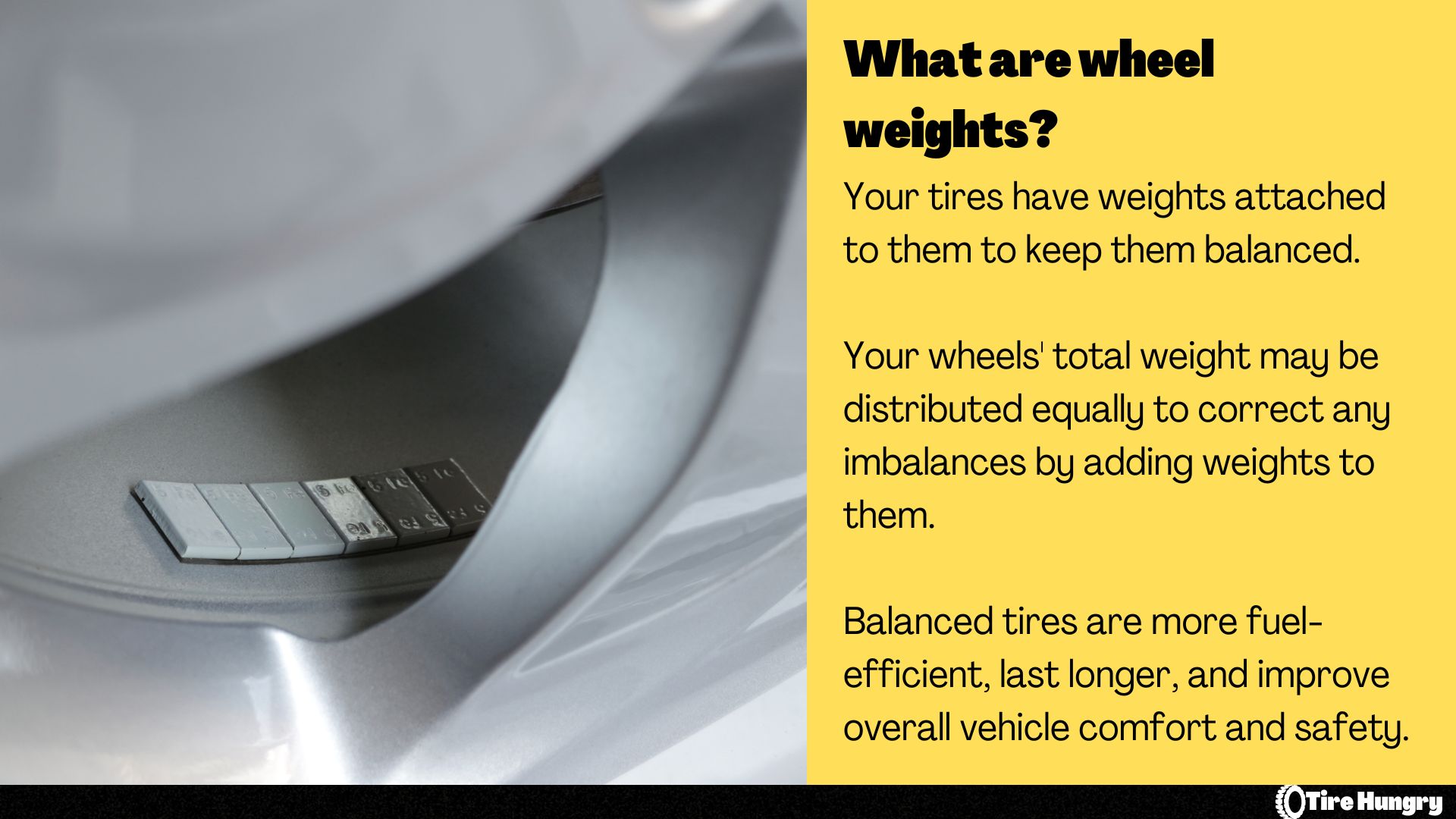
Next up we have damage to the wheel, which can be a serious problem. You can cause the tire to be out of balance by hitting a curb. These can technically be considered as small bends on the wheel, so you need the weights to correct that. Keep in mind that major bends mean you’ll need to fix the wheel or, in some cases, replace it.
Finally, we have the tires. When your car is parked for a long time, the tires take the weight and become slightly deformed. You may not notice this with the naked eye, but you will notice it the first time you drive. Depending on the severity, the tires may get back to shape after a while, but there’s a good chance that they won’t. If the damage to the tires isn’t massive, then you can take them to a shop to have them rebalanced.
How to tell if you need a wheel alignment?
The second problem you can face is wheels that are out of alignment. This is a bit more difficult to notice, but there are some strong signs showing that one or more wheels need to be aligned. Some of these will be noticed immediately, while for others it may take some time, depending on how much you drive your car.
The car pulling to one side is one of the first signs. If you’re driving in a straight line and have the steering wheel as straight as possible, the car should drive straight. Having one wheel out of alignment means that the car won’t do that. It’s a similar case with braking, as you’ll need to correct the steering wheel if you’re braking in a straight line.
Speaking of the steering wheel, you may notice it being a few degrees off from being straight when the car is going straight. Even though this is a sign of some of your tires being out of alignment, it can mean that the steering rack needs some adjustments.
There are some signs that you won’t notice right away and they’re related to the tires. Misaligned wheels produce uneven or faster tire wear than usual. This happens to the wheel that needs to be aligned, so upon inspection, you may notice that it’s worn more than the others.
What causes wheels to be out of alignment?
Wheel alignment isn’t something that you’ll never have to do. There are multiple situations where you’ll need to realign your wheels.
I mentioned that kitting a pothole or a curb can cause your tires to be out of balance, but it can also misalign your wheels, depending on the severity of the hit. Sometimes it may cause both, so you should check them.

Over the years, I’ve witnessed minor accidents to cause a misaligned wheel. You may think that a small fender bender is only cosmetic damage, but under the skin, there could be more. The suspension components are bolted to the frame of the car and the chassis, so impacting them can get the wheels misaligned.
Normal driving is another reason you may notice your tires are misaligned. When you install a fresh set of tires, the wheels usually get aligned and you think you’re done with that. As the tire wears down, even with normal wear, you may need to go to a shop to have the wheels aligned.
How dangerous are misaligned wheels or unbalanced tires?
Having misaligned wheels or unbalanced tires isn’t the most dangerous thing in the world, but you shouldn’t ignore it. Don’t take this the wrong way, I’m not saying that it’s benign, but it’s less dangerous than a car without brakes, for example.
If things aren’t “perfect” with either of them, the car will continue to drive, but not as good as it should. Prolonged driving will cause damage to the tires or suspension components, so I’d advise you to have it checked out as soon as possible.
Conclusion
For many people, wheel alignment or tire balance is something that they don’t pay too much attention to. Ignoring them can be a problem, as you’re risking putting unnecessary damage to some components and in the long run, you’re risking safety.
Therefore as soon as you notice some signs I outlined, you should take your car to a tire shop, where the technicians can check the problem and eliminate it. There isn’t a strict rule on how often to do that. I’ve been in situations where I didn’t need to align the wheels for years, but then I had to do it twice in a matter of a few months. There’s no rule with this. The same goes for balancing.
You are at an advantage if you use two sets of tires, as tire shops balance the tires every time they fit them to your car.
Just follow the signs and if you notice something out of the ordinary, it means that you’ll need to act accordingly.
